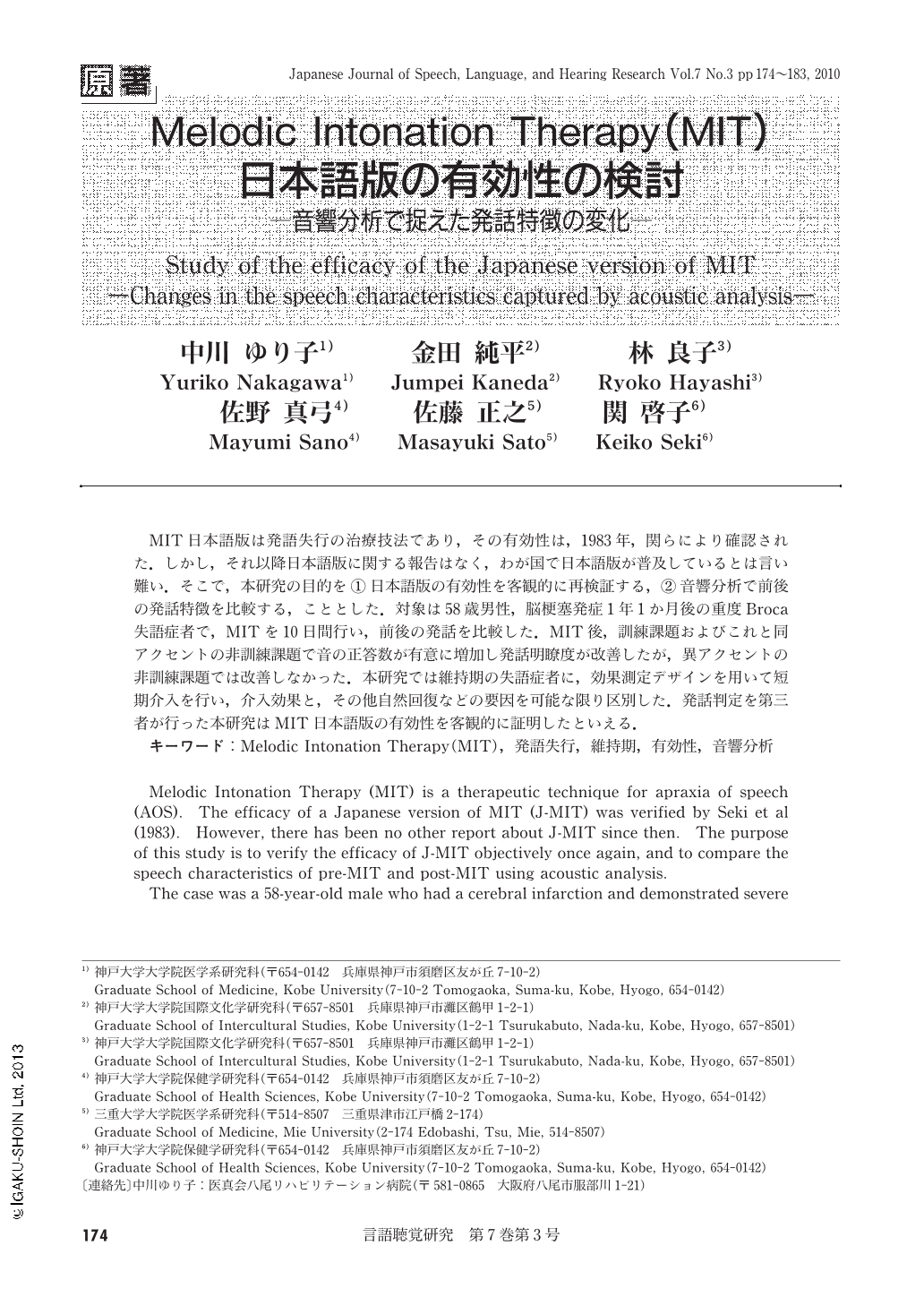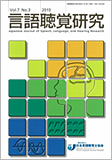Japanese
English
- 有料閲覧
- Abstract 文献概要
- 1ページ目 Look Inside
- 参考文献 Reference
- サイト内被引用 Cited by
MIT日本語版は発語失行の治療技法であり,その有効性は,1983年,関らにより確認された.しかし,それ以降日本語版に関する報告はなく,わが国で日本語版が普及しているとは言い難い.そこで,本研究の目的を①日本語版の有効性を客観的に再検証する,②音響分析で前後の発話特徴を比較する,こととした.対象は58歳男性,脳梗塞発症1年1か月後の重度Broca失語症者で,MITを10日間行い,前後の発話を比較した.MIT後,訓練課題およびこれと同アクセントの非訓練課題で音の正答数が有意に増加し発話明瞭度が改善したが,異アクセントの非訓練課題では改善しなかった.本研究では維持期の失語症者に,効果測定デザインを用いて短期介入を行い,介入効果と,その他自然回復などの要因を可能な限り区別した.発話判定を第三者が行った本研究はMIT日本語版の有効性を客観的に証明したといえる.
Melodic Intonation Therapy (MIT) is a therapeutic technique for apraxia of speech (AOS). The efficacy of a Japanese version of MIT (J-MIT) was verified by Seki et al (1983). However, there has been no other report about J-MIT since then. The purpose of this study is to verify the efficacy of J-MIT objectively once again, and to compare the speech characteristics of pre-MIT and post-MIT using acoustic analysis.
The case was a 58-year-old male who had a cerebral infarction and demonstrated severe Broca's aphasia with AOS. He received MIT for 10 days, starting 13 months after the onset of his stroke. We prepared three sets of words for the experiment. Set A was used as exercises for MIT, but sets B and C were not. The set B had the same accent patterns as set A, while set C had different accent patterns. Following MIT, set A and B showed a statistically significant increase in the number of correct phonemes, but set C did not.
This experiment utilized intensive MIT over a short period on a chronic aphasia case in order to distinguish the effect of MIT from other effects, such as spontaneous recovery. We concluded that the improvement in the clarity of post-MIT speech was caused by J-MIT.

Copyright © 2010, Japanese Association of Speech-Language-Hearing Therapists. All rights reserved.


